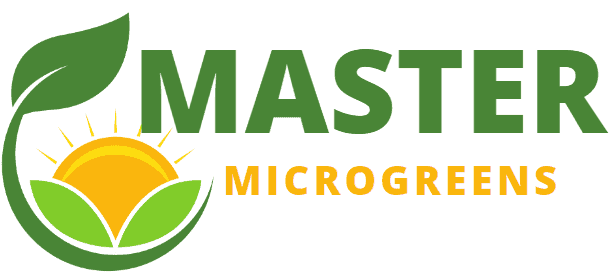Growing microgreens in soil vs water: Growing microgreens in soil and growing them hydroponically (in water) offer different benefits. Soil provides natural nutrients and promotes strong root development, while hydroponics allows for precise control of nutrient uptake and faster growth. Soil-grown microgreens tend to have a more robust flavor, while hydroponically-grown microgreens may have a milder taste. Experiment with both methods to see which one suits your preferences and gardening goals.
What You'll Learn
Soil Growing
Soil growing provides natural nutrients for your microgreens, so you don’t have to worry about adding them yourself! Growing in soil requires careful attention to soil fertility and composition.
The most important factor is soil pH, which should be slightly acidic with a range of 6.0-7.0. You want to make sure that the nutrient levels are balanced and that there are adequate amounts of nitrogen, phosphorus, and potassium for optimal growth. Additionally, you’ll need to add organic matter such as compost or manure to provide additional nutrition for your plants.
When it comes to watering your microgreens grown in soil, keep an eye on the moisture content of the soil so that it’s not too wet or too dry. Too much water can lead to root rot and other problems while too little water can cause stunted growth or even death of the plant.
You should also consider adding mulch around your plants to help retain moisture in the soil and prevent weeds from growing around them.
Soil also plays an important role in providing air circulation for your microgreens. This helps promote healthy root growth and overall health of the plant itself. Aerated soils allow oxygen down into the roots where it is needed for photosynthesis while also allowing carbon dioxide out of the plant more efficiently than non-aerated soils would allow for better nutrient uptake by the roots as well as increased resistance against diseases caused by fungi or bacteria buildup in poorly aerated soils.
Last but not least, when planting your microgreens in soil, it’s important to select a potting mix that is specifically designed for growing vegetables. This mix contains essential nutrients like micronutrients which can help improve yields significantly compared to regular garden soil mixes. It’s also important to ensure that your pots have drainage holes so excess water can escape from them without drowning out any tender microgreen seedlings planted within them!
Overview of Hydroponic Growing
Harnessing the power of water, hydroponics offers a unique way to cultivate crops with precise nutrient control. It’s like a master gardener wielding a magic wand. Hydroponic growing systems can provide enhanced light exposure and better use of resources than traditional soil-based methods. They also allow for more control over the environment in which your microgreens grow.
This includes providing ideal levels of pH balance and nutrients that are necessary for successful growth. Additionally, since you’re not relying on soil quality for nutrition, you’ll have much less risk of crop failure due to disease or pests.
The most common hydroponic setup is an ebb-and-flow system which uses pumps to periodically flood the root zone with nutrient solution before draining it away again. This type of system can be used to grow many different types of plants, including microgreens. However, it does require some maintenance in order to make sure the roots are getting enough oxygen and nutrients when flooded with water.
Aeroponics is another popular hydroponic method that uses spray nozzles mounted above the roots to mist them with nutrient solution instead of flooding them with water. This allows oxygen to reach deeper into the root zone than traditional ebb-and-flow systems and provides better access to oxygen for faster growth rates and higher yields. Aeroponic systems also use less water overall than other methods as they only need enough water for misting rather than flooding the entire root zone at once.
All in all, hydroponic growing allows gardeners a greater degree of control over their microgreen environment compared to soil-based methods. This includes greater light exposure, ideal levels of pH balance, and precisely controlled nutrient delivery. And all without relying on soil quality for nutrition or risking crop failure due to pests or pathogens present in dirt mediums. With careful planning and maintenance, however, any home gardener can successfully grow delicious greens year-round using this technology!
Comparing Soil and Hydroponic Growing
Are you curious about the differences between growing microgreens in soil versus water (hydroponically)? Let’s explore how they compare when it comes to nutrient availability, cost comparison, and ease of maintenance.
When it comes to nutrient availability, soil provides natural nutrients while hydroponics allows for precise nutrient control. Cost comparison is also an important factor. Soil may be cheaper up front than hydroponic systems, but costs can add up with frequent refills and replenishment of nutrients in a hydroponic system. Finally, ease of maintenance must be taken into account. While both systems require regular monitoring and upkeep, hydroponic systems are more high-maintenance due to their need for regular water changes and close monitoring of pH levels.
Nutrient Availability
You’re able to get the exact nutrients your microgreens need with hydroponics, or you can use soil to provide natural nutrients. Hydroponic growing has many advantages when it comes to nutrient availability as you have much more control over what your microgreens are receiving.
By using a hydroponic system, you’re able to precisely administer the exact amount of required minerals and trace elements that your microgreens need for optimal growth. This ensures that each crop has access to the right balance of nutrients at all times.
On the other hand, soil fertility is more variable and can vary depending on what type of soil you use. However, if you take the time to ensure that your soil is enriched with organic matter such as compost or manure before planting, then there will be plenty of natural nutrients available for your microgreens.
Cost Comparison
When it comes to cost, hydroponics and soil-based methods of growing microgreens offer different benefits.
Hydroponic systems are typically more expensive to set up than soil-based systems, as they require special equipment such as a reservoir, grow bed, and nutrient solution. However, the equipment is reusable and can be used for multiple harvests.
With soil-based systems, there is no need to buy any special equipment upfront; instead, you’ll likely need to purchase new soil or potting mix for each harvest. Additionally, harvesting costs tend to be higher with hydroponics because of the labor involved in removing individual plants from the grow bed.
On the other hand, harvesting costs are lower with soil-based systems as plants can simply be cut at the base without having to remove them from their container or tray individually. As such, while setup costs may be higher with hydroponics than with soil-based methods, over time, the cost savings on harvesting may even out these differences.
Ease of Maintenance
You don’t have to sacrifice your time and energy for a lush microgreens garden; hydroponics offers a low-maintenance solution with the same great benefits. Growing microgreens in water allows you to control the water quality, nutrient levels, and harvesting techniques with pinpoint accuracy.
As a result, you can enjoy a bountiful crop without having to spend hours on maintenance and upkeep. Just top off the tanks once or twice per week with fresh nutrients. Monitor pH levels quickly with an at-home test kit. Easily adjust nutrient levels if needed. Harvest within days of planting!
Hydroponic systems are designed for convenience and efficiency, allowing you to reap all the rewards of growing microgreens without any of the hassle. Whether you’re just getting started or a seasoned green thumb, this method takes out all the guesswork – so that all you have to do is sit back and watch your garden grow!
Environmental Impact of Growing Microgreens
The environmental impact of growing microgreens depends largely on whether one opts for soil or hydroponic methods, which could be likened to a choice between ‘the devil and the deep blue sea’.
When it comes to water usage, soil-based systems are more economical than hydroponic ones. This is because the amount of water needed for soil-based systems can be recycled and reused over time, while with hydroponics the water needs to be replaced regularly.
Additionally, energy consumption is an important factor when it comes to environmental impact. Although both types of systems require some energy input in order to operate properly, hydroponic setups tend to need more energy due to their complexity and frequent maintenance requirements. On the other hand, traditional soil-based microgreen production does not require a lot of energy input since they are significantly less complex than hydroponic growing methods.
When it comes to sustainability considerations, both methods offer positive and negative aspects that should be taken into account when making decisions about which method is best suited for certain circumstances.
For example, while traditional soil-based methods may require less energy due to their simplicity, they can also have negative impacts on the environment due to potential runoff from fertilizers and other contaminants that may leach into local sources of water if proper safeguards aren’t in place.
Hydroponics can provide greater control over nutrient levels as well as reduce the chance of contamination from external sources; however, this type of system requires more energy input and has a higher cost associated with it when compared with traditional soil-based methodologies.
Overall, there is no clear consensus as far as which method is better for minimizing environmental impacts when it comes to growing microgreens – each approach has its own pros and cons that should be evaluated on an individual basis before making any decisions about which option will work best for any given situation.
However, by taking into account factors such as water usage efficiency and associated energy costs along with sustainability considerations like runoff prevention and contamination risk reduction – growers can make informed choices that balance economic viability with ecological responsibility.
Ultimately then selecting either a traditional soil-based or hydroponic system will depend on what works best within one’s particular context; but regardless of which option one chooses – proper care must always be taken in order to ensure sustainable practices are being employed so as not just benefit oneself but also protect our planet’s precious resources for future generations.
Pest Control for Microgreens
Now that you understand the environmental impact of growing microgreens, let’s discuss how to protect them from pests.
Pest control for microgreens is a critical component in successfully growing them and can be done with or without the use of pesticides.
When using pesticides, it’s important to only use those approved for edible crops and follow the manufacturer’s instructions carefully. It’s also best to apply pesticide before an infestation occurs rather than waiting until pests are present as this will help prevent further spread of infestation. You should always read the label carefully and take into account any local laws regarding pesticide application.
Companion planting is another way to keep pests away from your microgreens without relying on pesticides. Planting certain herbs or flowers in between your rows of microgreens can repel insects that may otherwise try to feed on them. Some companion plants which have been found effective against pest include basil, marigold, oregano, rosemary, and chamomile.
Additionally, some gardeners find that floating row covers can provide physical protection against pest while still allowing sunlight and water through for photosynthesis and hydration respectively.
No matter what method you choose for protecting your microgreens from pests, it’s important to monitor their growth regularly so you can spot any signs of trouble early before it becomes too late for intervention. Keeping a close eye on your crop will help ensure its success!
Harvesting and Storage of Microgreens
Harvesting and storing your microgreens correctly can make or break a successful crop – so don’t let your hard work go to waste! Here are some tips for harvesting and storing microgreens, regardless of whether you’re growing them in soil or hydroponically:
Harvesting Techniques:
For soil-grown microgreens, use scissors to cut the greens at the base of the stem.
For hydroponically-grown microgreens, use tweezers to carefully pinch off each individual crop.
Storing Temperatures:
Store harvested microgreens in an airtight container at temperatures below 32°F (0°C). This will keep them fresh and crisp for up to three weeks.
Make sure not to store wet greens as this will promote mold growth. Dry the harvested greens before transferring them into an airtight container.
Storing your microgreens correctly is essential for preserving their flavor and keeping them fresh for longer periods of time. However, if possible it’s best to eat your freshly harvested crops right away as they’ll be at their peak quality! With these simple harvesting and storage tips, you’ll enjoy great tasting crops every time.





